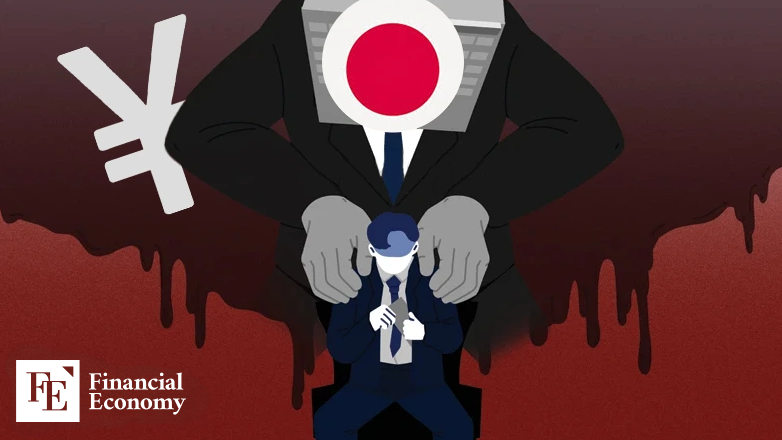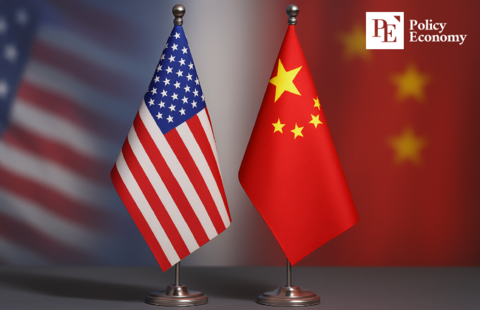Global Investment Funds Flock to Yen Amid Weak Dollar and Concerns Over Yen Carry Trade Unwinding
Input
Modified
Dollar-Yen Exchange Rate Falls Below ‘Black Monday’ Levels of Last August Global Weak-Dollar Trend Deepens, Yen Emerges as Alternative Safe-Haven Asset BOJ Rate Hikes and Tariff Uncertainty Likely to Fuel Yen Strength

The global financial landscape is once again shifting under the weight of geopolitical decisions and evolving central bank strategies. Following a turbulent policy turn from the Trump administration involving sweeping reciprocal tariffs, the U.S. dollar has shown signs of weakness. In its place, the Japanese yen has emerged as a surprising safe-haven contender, drawing the attention of investors worldwide. As uncertainty swells and the Bank of Japan (BOJ) signals a possible departure from ultra-low interest rates, anxiety is mounting over a potential unwinding of yen carry trades—a strategy that has defined cross-border investing for years.
Dollar Weakness Spurs a Rush Toward the Yen
The yen's recent surge can be traced back to a dramatic dip in the dollar-yen exchange rate. On April 18, the rate slipped into the 142-yen range, its lowest since September of the previous year. This sharp decline was notable even when compared to last August, when the BOJ surprised markets with an unexpected rate hike and briefly shook global risk appetite. The primary driver of the current drop, however, lies in President Trump’s erratic tariff maneuvering.
On April 9, the Trump administration imposed reciprocal tariffs ranging from 10% to 34% on major trading partners. Just a day later, the White House walked back these actions—excluding China—by delaying implementation for 90 days. Tariffs on certain auto parts were also postponed in quick succession. This policy volatility weakened investor confidence in the dollar, pulling down the U.S. dollar index to 99.40—its first sustained drop below the 100 mark in three years.
As the dollar’s dominance falters, investors have begun to seek stability elsewhere. The Japanese yen, historically perceived as a safe-haven asset, has filled that role. Speculative positions in the yen reached an all-time high of 121,800 contracts as of April 12, according to the U.S. Commodity Futures Trading Commission (CFTC). This shift signals a significant move away from dollar-denominated assets and toward the yen, accelerating its appreciation.
Adding to the yen’s allure is the BOJ’s evolving stance. BOJ Governor Kazuo Ueda recently noted that Japan’s real interest rates remain “very low,” hinting at the likelihood of another rate hike between June and July. Markets are now anticipating a steady tightening path, making the yen even more attractive to foreign capital.

The Looming Specter of a Yen Carry Trade Unwind
With the yen gaining strength and interest rate differentials between Japan and the U.S. narrowing, fears of a yen carry trade unwinding have reemerged. The carry trade strategy—borrowing low-yielding yen to invest in higher-yielding foreign assets—relies heavily on a stable or weakening yen. Any reversal in this dynamic could cause investors to rapidly unwind their positions, flooding the market with yen purchases and potentially triggering volatility in emerging markets.
These concerns are not unfounded. A 2023 report by the Bank of Korea estimated that the total volume of yen carry trades stood at 506.6 trillion yen (about $340 billion or ₩4,700 trillion) as of the previous March. Of this, 32.7 trillion yen—roughly 6.5%—was considered susceptible to unwinding. Should even a fraction of this capital be liquidated, emerging market currencies and equities could face serious turbulence.
Moon Hong-chul, a researcher at DB Financial Investment, warned of the systemic risks involved. “The volatility in interest rates, the Nikkei index, and the dollar-yen exchange rate is considerable,” he noted. “Such fluctuations could trigger a repositioning of deeply entrenched carry trade positions accumulated over the last 15 years.” If this repositioning unfolds, he added, it could usher in a major transformation in global asset allocation—far more disruptive than the short-term chaos seen during last year’s yen short trade unwinding.
From Yen to Franc: A New Chapter in Carry Trades
Despite these concerns, many analysts believe a repeat of the abrupt “Black Monday” seen in August 2023—when yen carry trades unwound suddenly and rocked financial markets—is unlikely. This time around, investor behavior has shifted. Unlike last year’s surprise scramble for yen, the current rally has been driven by proactive accumulation, which reduces the risk of panic buying.
With the yen gradually losing its position as the world’s lowest-yielding currency, attention is turning toward the Swiss franc as the next funding currency of choice. The Swiss franc recently overtook the yen in volume of carry trades. According to CFTC data, as of December, trades selling francs to buy dollars surpassed those involving yen sales—a reversal from trends just a month earlier.
Switzerland’s central bank has helped facilitate this shift. On March 20, the Swiss National Bank (SNB) cut its benchmark interest rate from 0.5% to 0.25%, marking its fifth consecutive rate cut amid easing inflationary pressures. By contrast, the BOJ has moved in the opposite direction, ending its negative interest rate policy last year with a historic hike and following up with gradual increases. Japan’s current 0.5% benchmark rate now places it above Switzerland for the first time since September 2022.
For years, Japan’s near-zero interest rates made the yen the go-to currency for global carry trades. But the forex landscape is evolving with that era drawing to a close. The Nihon Keizai Shimbun recently reported that the reversal in interest rate differentials is making yen carry trades more difficult. Keiichi Iguchi, Chief Strategist at Resona Holdings, put it succinctly: “The Swiss franc is becoming an increasingly likely candidate as a funding currency for carry trades.”





















